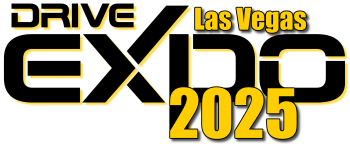You know the phrase ‘put it in writing’? We all know that your shop’s policies and procedures should be written down, but a PLAYBOOK takes that to a whole new level. It’s not just the details that matter with each policy, it’s also how each policy interacts with other policies…the steps and training needed for each and every policy…a good PLAYBOOK offers a true framework of your business.
Your shop is filled with the latest tools and technology – consider a PLAYBOOK another tool that is needed to create or build a successful business. This is the document that represents you and your shop. It should represent your policies in detail, but it also represents your history and philosophy and objectives.
A complete PLAYBOOK is not something that will be completed in a day or a week. This is something to be developed not only over time, but it should continually evolve. The culture of your business changes. Your customer base increases. You start to use new technology for your shop. With each change, your PLAYBOOK should be revisited and revised.
Your PLAYBOOK needs to keep pace with how your business changes and grows.
While its easy to get a bit overwhelmed by how much needs to be documented, if you attack it one-by-one it may be more manageable. Following are the most important components of a PLAYBOOK. There are more sections than listed here, but if you can complete the below areas, you’ll be more than halfway there!
 OWNER MISSION STATEMENT
OWNER MISSION STATEMENT
This states your overall purpose for being in business. As your business grows, this will change. Think of this as a big statement about your shop. An example is: “We Work Every Day to Service Each Client as if They Were Family.”
GOALS
State what you want to do. Where you want your business to be this time next year and in five years. The goals should be big and aspirational, but not so big that it seems unattainable.
“It helps to keep our shop on-task in ALL areas of the business. Each staff member has a clear direction of their job duties.” – Paula Wojtcuk, OWNER Broadway Auto Repair, Mesa Arizona
PROCEDURES
How it’s done – and ‘it’ being everything. From How to Open your Shop each morning, proper equipment maintenance to how an employee should request time-off. Think of a Procedure as a step-by-step method to complete and finish something.
POLICIES

These are the ‘rules’ of the shop. They tend to be very black and white…nothing ambiguous about a policy. A few typical policies are the dress code of the business, employee vacation and benefits and the hours of the business.
GUIDELINES
Not to be confused with a shop policy – a guideline is an overview. They tend to offer a general recommendation of how to perform and complete a job. A guideline is less stringent then a policy. A guideline may be a statement on how to intake a customer’s vehicle.
“Do your PLAYBOOKS a little every day – it doesn’t all have to be done at the same time (one bite at a time).” – Terri Erickson, OWNER Automotive Excellence, Rohnert Park, California
FLOW CHARTS
Flow charts are a visual representation of how things progress…or flow…in your shop. To produce a flow chart, it could be as simple as creating boxes on a blank sheet and writing in each square or box, the steps when a car comes into the shop. Step 1. Vehicles comes into the shop Step 2. Service Advisor writes the customers complaint Step 3. SA submits RO to the tech’s rack, and so on, until you get to the last steps of returning the car to the customer. This is a terrific tool for new employees. It’s a representation that is easy to grasp of steps taken in the shop.
ORGANIZATIONAL CHARTS

This is just what it says. It’s a visual representation of who does what in your shop. This doesn’t need to be elaborate. The Shop Owner (you) are at the top, then your departments are below that. Each of the department’s employees are in each section. Again, this is a great tool for a new employee. When they start, they want to know who does what. This is a clear and easy to understand chart just for that use.
“It’s vitally important to have policies and procedures. Everyone understands our values and it keeps everyone on the same page with the same expectations.” – Samantha Radak, OWNER Protrans Automotive, Riverside, California
JOB DESCRIPTIONS
Related to an organizational chart, job descriptions are a clear description of each employee, their title and what they do. Depending on what the title includes, it could be as simple as one paragraph.
What’s not mentioned here are KPI’s, terminology, checklists and a few other areas that should be in a PLAYBOOK. But the above areas are a great start. Also, the use of short video clips and photos are terrific elements to include in a PLAYBOOK. Remember, you won’t complete a PLAYBOOK in one day or week, this is something to continually work on. A PLAYBOOK is a living, breathing document that evolves along with your business.
Want to learn more? Check out the DRIVE Developing Shop Playbooks workshop here.
LINK TO ARTICLE IN SHOP OWNER MAGAZINE
LINK TO SHOP OWNER ONLINE ARTICLE







 For DRIVE clients, click
For DRIVE clients, click 
